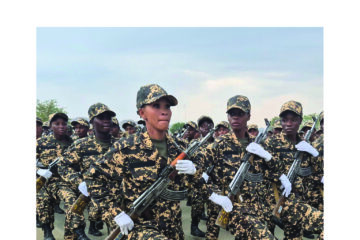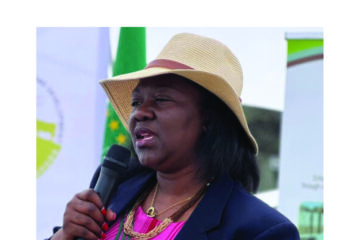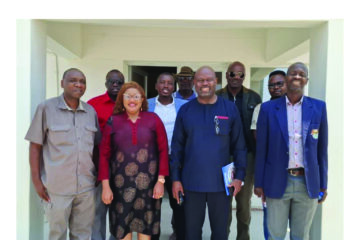Hertta-Maria Amutenja
Traditional authorities have expressed discontent with the national costume recently unveiled for Miss Namibia, Prisca Anyolo, for the 73rd Miss Universe Pageant, questioning its representation of the country’s cultural diversity.
The costume, made from Odelela fabric, which is traditionally associated with the Aawambo people, has ignited a debate on whether it adequately embodies Namibia’s cultural inclusivity.
Maria Katjaita of the Maharero Traditional Authority, however, voiced her disappointment with the choice, arguing that a national costume should strive for cultural neutrality and inclusivity.
She remarked on the costume’s ties to a specific cultural group, suggesting it could have incorporated colours from Namibia’s national flag or neutral elements instead.
“The national costume is supposed to be neutral and inclusive of all Namibian tribes. Using something directly tied to a specific culture creates a sense of exclusion. A more neutral representation, like colours from the national flag or natural elements, would have been ideal,” Katjaita said.
Chief Stefanus Gariseb of the /Gobanin Traditional Authority echoed Katjaita’s views, stressing the importance of consulting widely on national representations.
“I respect and admire the Oshiwambo attire. However, for national events, there should be wider consultation among leaders to reach a joint decision. A national costume representing Namibia should be a product of collective decision-making,” Gariseb said.
Chief Juliane Gawa!nas of the Khomanin Traditional Authority shared similar concerns, citing Namibia’s ethnic and cultural diversity.
“Namibia has different tribes with unique norms, attire, and languages, each with meaning in its cultural context. To represent Namibia, she should wear something symbolic of our shared identity, like the Big Five animal skins or Welwitschia plants so that no one is excluded,” Gawa!nas said.
Hertta-Maria Emvula of the Ongandjera Traditional Authority also questioned the choice, stating that the costume would have been fitting if it represented only one region.
Emvula proposed a design that included materials or colours representing all tribes in Namibia, particularly national colours.
“If it were Miss Owambo, it would be a great outfit. For a national costume, they could have included materials from each tribe or colours from our national flag. This would ensure continuity, as future Miss Namibia contestants could incorporate these elements,” Emvula said.
Glen Kasper from the Topnaar Traditional Authority added his perspective, highlighting the modernity of the dress while acknowledging its ties to specific cultural elements.
“The dress is a more modernised dress that uses the traditional colours of the Oshiwambo people. The baskets on the head are not exclusive to the Oshiwambo; other tribes, like the Kavangos, also use them. It’s really not possible to represent all tribes in one costume because of Namibia’s cultural diversity. We must use a holistic approach when symbolising a national costume, focusing on what Namibia is known for, like our desert and animals. More creativity is needed in the design,” Kasper said.
The organisers revealed the costume last week as part of Miss Namibia’s preparation for the Miss Universe pageant in Mexico City, describing it as a blend of cultural heritage and contemporary design.
According to them, the Odelela fabric represents Namibian artistry and versatility and has transcended regional use to gain popularity across various communities.
Additional design elements, they stated, aim to symbolise Namibian landscapes and traditions, with features like a basket crown from the Zambezi and Kavango regions and accessories that signify Namibian sunlight and the sand dunes.
The controversy extended to social media, where Namibians shared their views on the costume’s symbolism.
X user Gerson Musewa questioned whether the costume represents the entire nation or just a specific region.
“Is Miss Namibia representing where she is from, or the whole country?”
Another user, ria_tjaveondja, commented, “National costumes are meant to represent the nation. She’s Miss Universe Namibia, not Miss Aawambo. She should represent Namibia, not just one part of it.”
Others defended the design, suggesting that any Namibian culture could serve as a basis for a national costume.
X user Rauna Namukwambi said, “I thought the national costume could reflect any Namibian culture. The Aawambo are Namibians by birth and descent unless there’s a better description that we are missing. Good luck, Namibian girl.”




